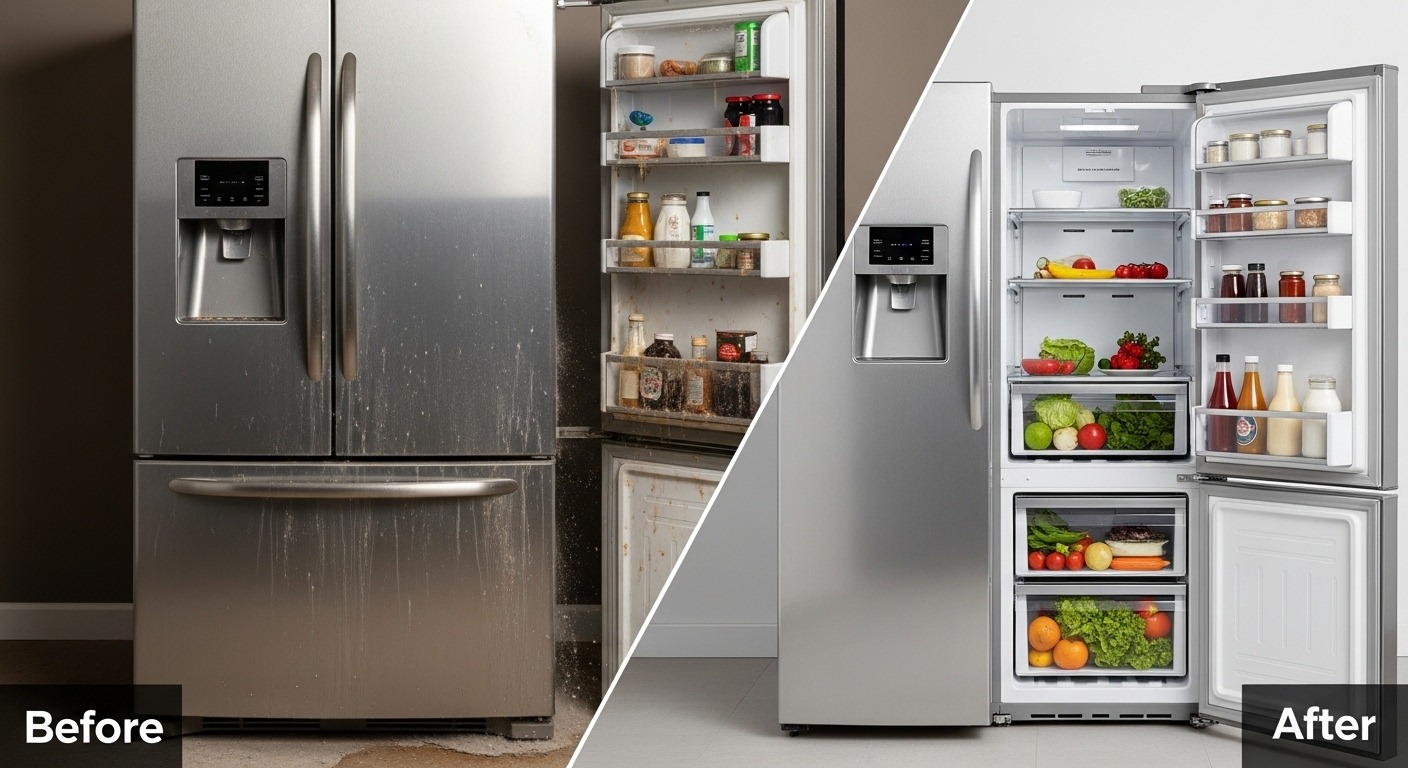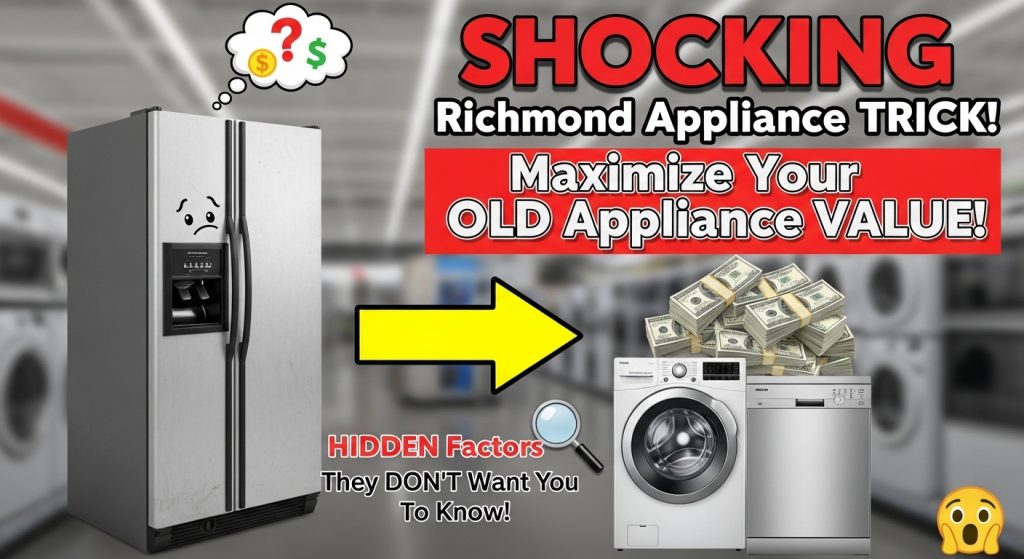Richmond Appliance Trade-In Value: How to Maximize What Your Old Appliance Is Worth Before Buying New (Hidden Factors That Boost Your Return)
Tired of watching your old appliances collect dust while their trade-in value plummets by the day? Ready to discover the insider secrets that could boost your Richmond appliance trade-in return by 40% or more through strategic timing, preparation, and knowing exactly which hidden factors make evaluators reach for their calculators?
Picture this: you’re standing in your kitchen, staring at that trusty refrigerator that’s been faithfully churning out ice cubes for the past eight years, and you’re weighing whether to trade it in or just haul it to the curb. Here’s the thing that most Richmond homeowners don’t realize – the difference between a mediocre trade-in offer and a jaw-dropping one often comes down to factors that have absolutely nothing to do with how well your appliance actually works. I learned this the hard way when I first moved to Richmond and practically gave away a perfectly good washer-dryer set because I didn’t understand the local market dynamics.
The appliance trade-in game has completely evolved over the past few years, especially in the greater Vancouver area where programs like LG’s instant savings promotions are stacking rebates with manufacturer incentives in ways that can seriously impact your bottom line. Whether you’re dealing with Coast Appliances in Richmond, exploring manufacturer trade-in programs, or considering private sales to local buyers, understanding the nuances of appliance depreciation, market timing, and preparation strategies can literally mean the difference between walking away with pocket change or scoring enough credit to significantly offset your next appliance purchase.
The reality is that most people approach appliance trade-ins completely backwards – they wait until their old appliance dies, then scramble to find any program that will take it off their hands. But the savvy Richmond homeowners who maximize their returns? They’re thinking three moves ahead, timing their trades around sales cycles, and leveraging local market conditions that create opportunities for significantly higher valuations.
Key Outtakes:
- Appliances depreciate at 5-16% annually depending on type, with refrigerators and washers depreciating fastest at 12.5% per year, while electric stoves hold value better at just 5.88% annual depreciation
- Trading in during major sales events (Memorial Day, Labor Day, Black Friday) can increase total savings by up to $150 beyond base trade-in value through manufacturer rebate stacking
- Professional cleaning and minor repairs can boost trade-in value by 20-40% compared to as-is condition, with simple fixes like door seal replacement returning 3-5x the investment
- Matching appliance sets command 15-25% higher trade-in values than individual mismatched pieces, especially in Richmond’s competitive rental property market
- Energy Star certified appliances retain 30-50% more value in trade-ins compared to non-certified models, and Richmond’s BC Hydro rebate programs can transfer value to new owners
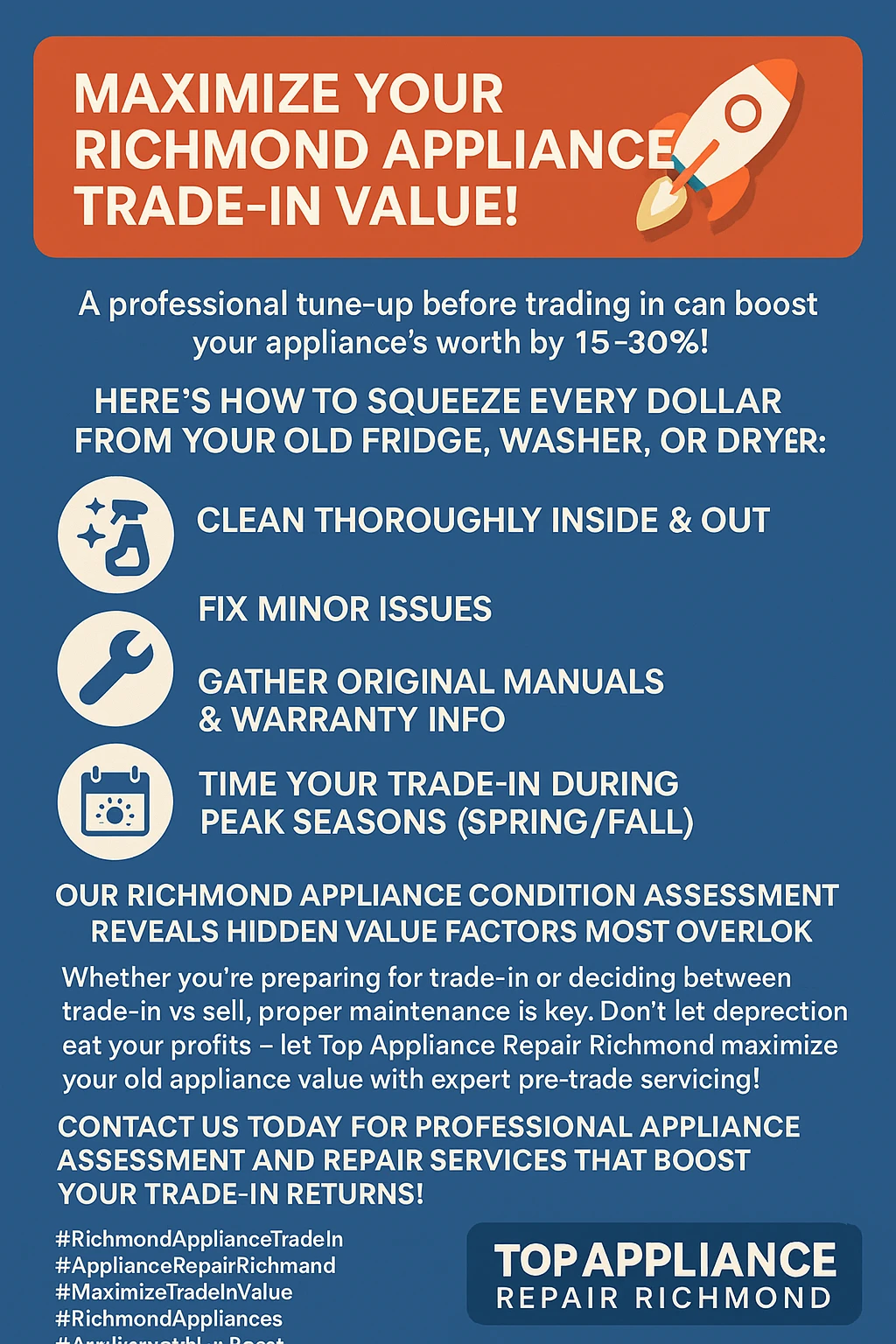
Understanding Appliance Trade-In Value in Richmond
Before diving into the advanced strategies, let’s establish exactly how appliance trade-in programs actually work in the greater Vancouver area – and why Richmond presents some unique opportunities that you won’t find in other markets. The foundation of any successful trade-in strategy starts with understanding what determines your appliance’s base value, and frankly, most people get this completely wrong from the start.
The harsh reality is that appliances lose value faster than most people realize, and the depreciation rates vary dramatically by type. According to comprehensive appliance depreciation data, your refrigerator is hemorrhaging 12.5% of its value every single year, which means that $2,000 fridge you bought five years ago is now worth approximately $1,250 in the current market. Washers and dryers follow the same brutal 12.5% annual depreciation rate, while dishwashers match this pattern exactly.
Here’s where it gets interesting though – not all appliances depreciate at the same rate, and understanding these differences can inform your trade-in timing strategy. Electric stoves and ranges depreciate at only 5.88% annually, making them some of the best value-holders in your kitchen. Gas stoves perform even better at 5.26% annual depreciation, while freezers and tankless water heaters hold their value remarkably well at just 5% per year. This means if you’re planning to upgrade multiple appliances, you might want to prioritize trading in that rapidly-depreciating refrigerator while holding onto the electric range that’s retaining more of its value.
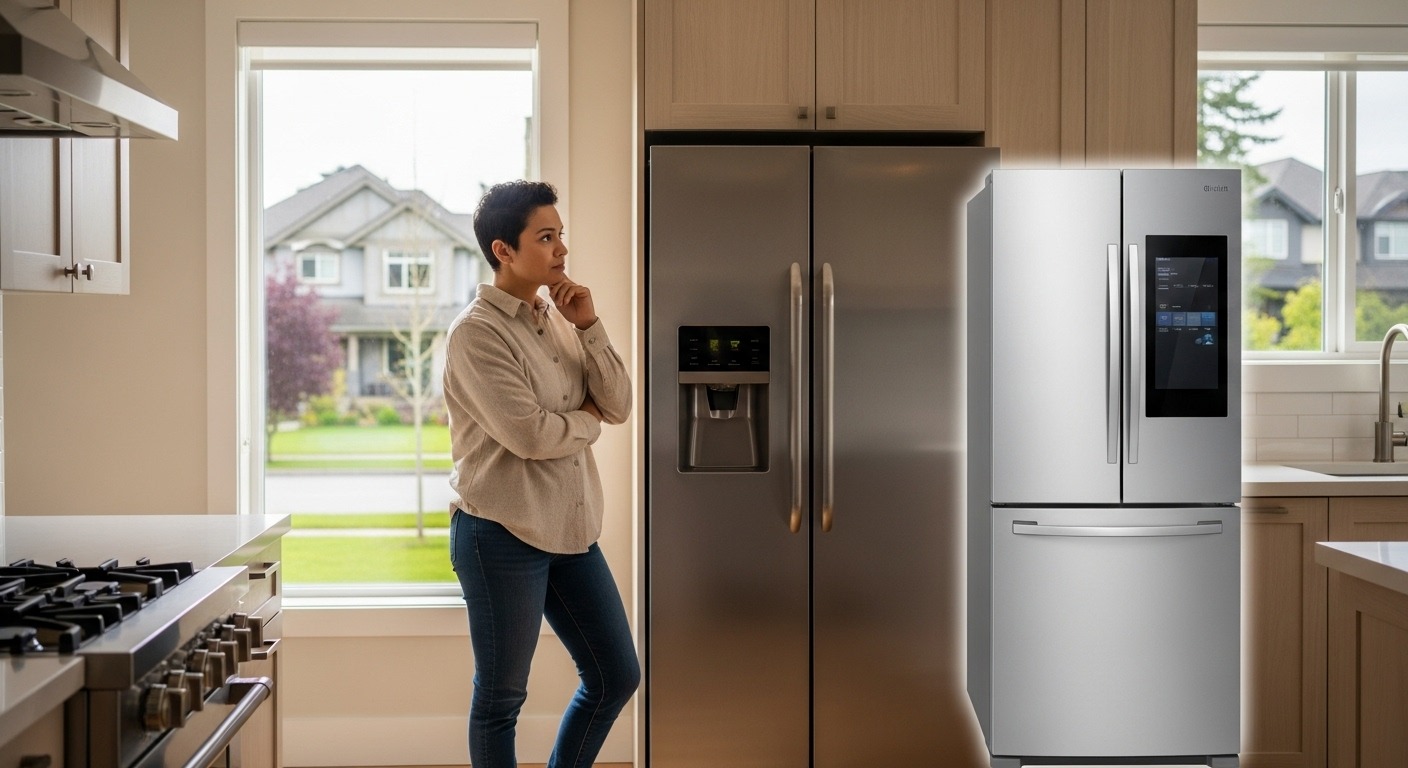
The Richmond market specifically offers several advantages that savvy homeowners can leverage. Coast Appliances operates a major showroom right in Richmond, providing in-store assessment services for premium brands like Sub-Zero, Wolf, and Thermador – brands that command significantly higher trade-in values. Meanwhile, the broader Vancouver area participates in major manufacturer rebate programs, with some offering up to $4,000 in mail-in rebates on kitchen packages. The key is understanding how to stack these regional opportunities with timing-based strategies.
When comparing trade-in programs versus private sales in the Richmond market, you’re typically looking at trade-in offers that represent about 70-80% of what you could get selling privately. The trade-off comes down to convenience versus maximum return. Local Richmond buyback services offer a middle ground, providing instant cash without requiring a new appliance purchase, though their offers typically fall somewhere between trade-in and private sale values. The unique factor in Richmond is the area’s active investment property market – landlords constantly need appliance sets for rental units, creating a robust private sale market that can sometimes exceed typical trade-in values by 30-40%.
Hidden Factors That Significantly Boost Trade-In Value
Now we’re getting into the strategies that separate the amateurs from the pros – the hidden factors that can literally double your trade-in offer without changing a single thing about your appliance’s actual functionality. Most people think condition assessment is just about “does it work or not,” but evaluators are looking at dozens of subtle indicators that signal how well an appliance has been maintained, and these details can trigger significantly different valuation categories.
Let’s talk about strategic repairs that actually pay for themselves multiple times over. Replacing broken door seals on refrigerators costs between $20-40 in parts, but can increase your trade-in value by $80-150 because evaluators see intact seals as indicators of overall maintenance quality. Loose handles or knobs cost $5-15 to fix but add $30-60 in perceived value. The magic number to remember is 30% – if a repair costs more than 30% of the expected value increase, skip it and focus on easier wins.
Here’s where most people completely miss the boat: professional-level cleaning can boost your trade-in value by 20-40%, but it’s not just about surface cleaning. Comprehensive appliance preparation involves removing all rust and corrosion, especially in moisture-prone areas, deep cleaning refrigerator coils to improve energy efficiency testing results, and completely degreasing ovens and stovetops using baking soda paste methods. The goal isn’t just clean – it’s showroom ready.
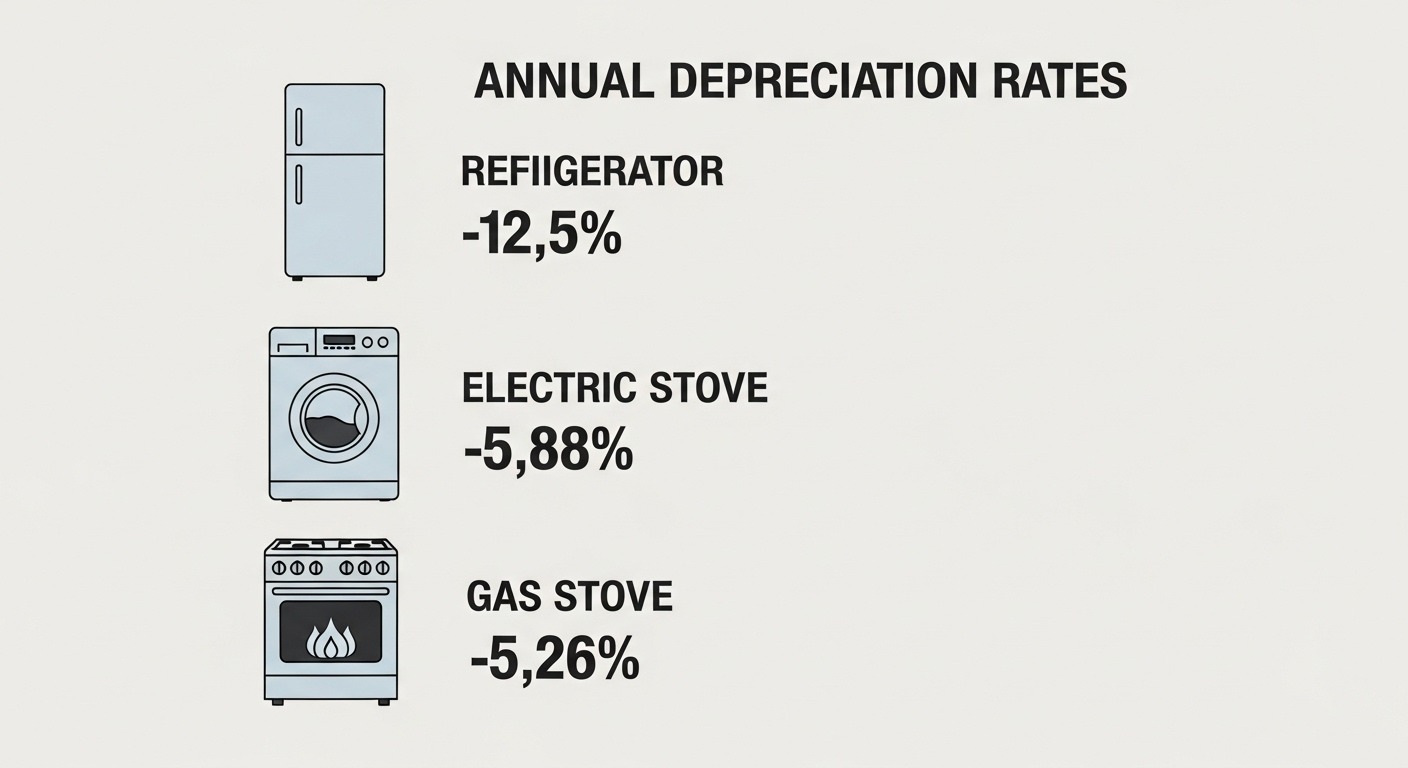
Documentation becomes incredibly powerful when you understand how to present it strategically. Energy Star certification has become a major value driver because energy-efficient appliances mean lower utility bills for buyers. Original Energy Guide labels showing consumption rates, utility bill comparisons demonstrating efficiency, and smart appliance energy reports from connected devices all contribute to a higher valuation tier. In Richmond specifically, documenting any active BC Hydro rebates or energy efficiency incentives can add $50-200 to perceived value because these programs can sometimes transfer to new owners.
The matching set premium is where Richmond’s market dynamics create serious opportunities. Kitchen sets consisting of range, refrigerator, and dishwasher command 15-25% premiums over individual
